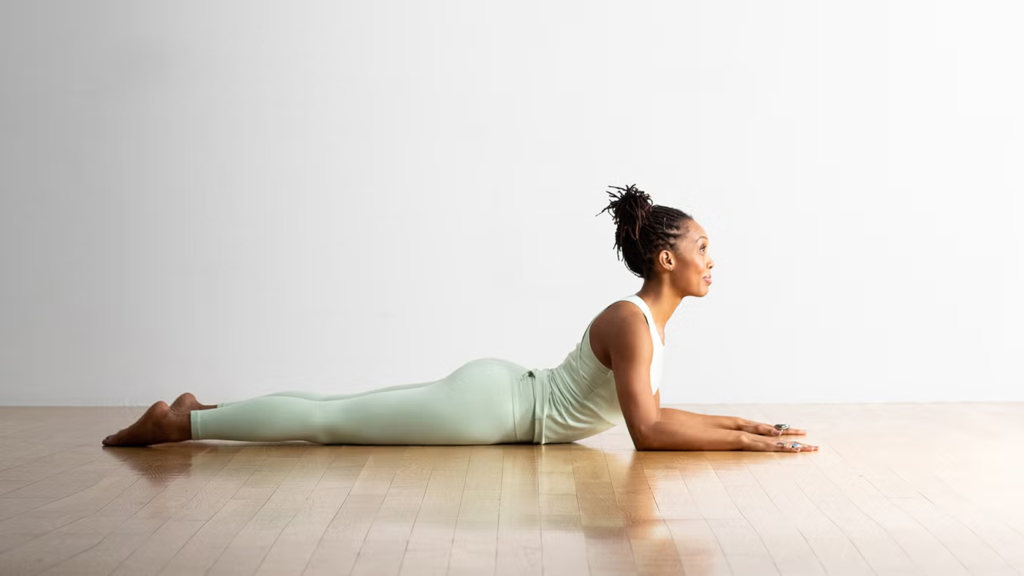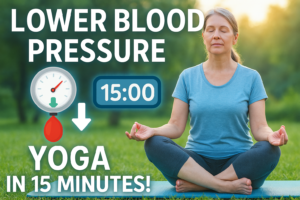Lower back pain is a widespread issue that affects millions of people worldwide. Whether caused by long hours of sitting, poor posture, or the everyday stresses of modern life, discomfort in the lower back can interfere with daily activities and reduce quality of life. Incorporating yoga for lower back pain into your routine offers a natural, effective way to alleviate discomfort and build strength. In this comprehensive guide, we delve into a series of back pain yoga poses and techniques designed to relieve tension, enhance flexibility, and promote long-term relief.
Understanding Lower Back Pain and the Role of Yoga
Lower back pain can be attributed to several factors such as muscle imbalances, prolonged sitting, and stress. When muscles in the lumbar region are tight or weakened, they put extra pressure on the spine, leading to discomfort and, in some cases, chronic pain. Yoga therapy for back pain focuses on gentle, mindful movement, breath awareness, and targeted stretching that not only eases pain in the lower back but also addresses contributing factors like weak core muscles and poor posture.
Common Causes of Lower Back Pain
- Sedentary Lifestyle: Long periods of sitting weaken back muscles and contribute to stiffness.
- Muscle Imbalances: Tight hamstrings, hip flexors, and weak core muscles create stress on the lumbar spine.
- Poor Posture: Improper alignment while working or sitting can lead to chronic back pain.
- Stress: Mental and emotional stress often results in physical tension, particularly in the back.
How Yoga Provides Relief
Yoga for lower back pain works by:
- Stretching Tight Muscles: Gentle poses release tension in the lower back, hips, and hamstrings.
- Strengthening Core Muscles: Many back pain yoga poses engage and strengthen the core, providing better spinal support.
- Improving Posture: Correct alignment and mindful movement lead to better posture.
- Enhancing Circulation: Improved blood flow promotes healing and reduces stiffness.
- Reducing Stress: Mindful breathing techniques lower stress hormone levels, helping to relax tight muscles.
By integrating these principles into a daily routine, you can achieve both immediate relief and long-term benefits.
Safety Tips and Considerations
Before beginning any yoga practice for lower back pain, it is important to consider your current physical condition. Always:
- Consult a Professional: Speak with a healthcare provider if you experience severe pain or have a history of back injuries.
- Listen to Your Body: Avoid any poses that cause sharp pain. Yoga should feel relieving, not painful.
- Use Modifications: Utilize props like blocks, straps, or cushions to support your practice as needed.
- Move Slowly: Transition between poses mindfully and with control.
Essential Yoga Poses to Relieve Lower Back Pain
Below are several key back pain yoga poses that target the lower back. Each pose is described in detail with instructions, benefits, and modifications.
1. Child’s Pose (Balasana)

Overview:
Child’s Pose is a restorative and calming position that gently stretches the lower back, hips, and thighs. This pose is perfect for releasing tension and resetting your breathing.
How to Do It:
- Begin by kneeling on the floor with your big toes touching and knees spread about hip-width apart.
- Sit back on your heels and slowly lower your torso forward, resting your forehead on the mat.
- Extend your arms out in front of you or rest them alongside your body.
- Hold the pose for 1-2 minutes, breathing deeply and allowing your lower back to relax.
Benefits:
- Eases tension in the lumbar region.
- Promotes deep relaxation and stress relief.
- Stretches the hips, thighs, and lower back.
Modification:
Place a folded blanket between your thighs and calves if your hips are tight, ensuring more comfort in the stretch.
2. Cat-Cow Pose (Marjaryasana-Bitilasana)

Overview:
This dynamic sequence is excellent for warming up the spine, increasing flexibility, and reducing stiffness in the lower back.
How to Do It:
- Begin on your hands and knees in a tabletop position, with wrists under shoulders and knees under hips.
- Cow Pose: Inhale, drop your belly toward the mat, lift your chest, and look slightly upward.
- Cat Pose: Exhale, round your spine upward, tucking your chin to your chest.
- Continue alternating between these two poses, matching the movements with your breath for 1-2 minutes.
Benefits:
- Improves spinal flexibility.
- Increases blood circulation in the back.
- Helps reduce tension and relieve lower back pain.
Modification:
If you experience discomfort, reduce the range of motion until you build strength and flexibility.
3. Sphinx Pose

Overview:
Sphinx Pose is a gentle backbend that targets the lower back, strengthening and stretching the muscles along the spine.
How to Do It:
- Lie on your stomach with your legs together and extended behind you.
- Place your elbows under your shoulders, forearms on the ground, and lift your chest off the mat.
- Keep your neck neutral and gaze forward.
- Hold for 1-2 minutes, breathing deeply.
Benefits:
- Strengthens the muscles supporting the lower back.
- Provides a gentle stretch along the spine.
- Encourages proper posture and alignment.
Modification:
If lifting the chest is uncomfortable, keep your elbows slightly bent and lower your upper body closer to the mat.
4. Cobra Pose (Bhujangasana)

Overview:
Cobra Pose is an invigorating backbend that strengthens the back muscles and opens up the chest. It is beneficial for relieving tension in the lower back.
How to Do It:
- Lie on your stomach with your legs extended and the tops of your feet on the mat.
- Place your hands under your shoulders and gently lift your chest, keeping your elbows close to your body.
- Press the tops of your feet and thighs into the mat, supporting your lower back.
- Hold the pose for 30 seconds to 1 minute, breathing steadily.
Benefits:
- Strengthens the lower back muscles.
- Increases flexibility in the spine.
- Opens the chest and improves posture.
Modification:
If full Cobra Pose is too challenging, try a gentle lift by keeping your elbows bent and only raising the upper chest slightly off the mat.
5. Seated Forward Bend (Paschimottanasana)

Overview:
A deep stretch for the entire back, Seated Forward Bend also targets the hamstrings and lower back. This pose is ideal for releasing tension in the spine and calming the mind.
How to Do It:
- Sit on the mat with your legs extended straight in front of you.
- Inhale, lengthen your spine, and exhale while folding forward from the hips.
- Reach for your feet or shins, keeping your back as straight as possible.
- Hold for 1-2 minutes while breathing deeply.
Benefits:
- Stretches the hamstrings and lower back.
- Improves flexibility and relieves muscle tension.
- Calms the mind and relieves stress.
Modification:
Use a yoga strap around your feet if you cannot reach them easily, which helps maintain the stretch without strain.
6. Bridge Pose (Setu Bandhasana)

Overview:
Bridge Pose is a restorative backbend that not only relieves lower back pain but also strengthens the glutes, hamstrings, and core muscles. This pose provides both a stretch and a strengthening exercise for the lower back.
How to Do It:
- Lie on your back with your knees bent and feet flat on the mat, hip-width apart.
- Place your arms alongside your body with palms down.
- Press into your feet and slowly lift your hips off the mat, creating a straight line from your shoulders to your knees.
- Hold for 30 seconds to 1 minute, then gently lower your hips back down.
Benefits:
- Strengthens the muscles of the lower back, hips, and core.
- Opens up the chest and improves circulation.
- Eases tension and alleviates pain in the lower back.
Modification:
Place a block under your sacrum for additional support during the pose, especially if you experience discomfort lifting your hips.
7. Supine Twist (Supta Matsyendrasana)

Overview:
A gentle spinal twist is excellent for releasing tension in the back and improving overall mobility. Supine Twist helps to massage the internal organs and realign the spine.
How to Do It:
- Lie on your back with your arms extended out to the sides.
- Bend your knees and place your feet flat on the mat.
- Slowly lower your knees to one side while turning your head to the opposite side.
- Hold the twist for 1-2 minutes before switching sides.
Benefits:
- Relieves tension and stiffness in the lower back.
- Improves spinal mobility and aids digestion.
- Provides a gentle massage to the back muscles.
Modification:
If your knees are too high from the floor, place a pillow or folded blanket under them for added comfort.
Creating a Routine: Combining Yoga Poses for Lasting Relief
Integrating these back pain yoga poses into a daily routine can provide cumulative benefits over time. Here’s a simple routine you can follow:
- Warm-Up (3-4 minutes):
Begin with Cat-Cow Pose to mobilize the spine and warm up the back muscles. - Deep Stretching (10 minutes):
Flow through Child’s Pose, Sphinx Pose, and Cobra Pose to gently stretch and strengthen the lumbar region. - Strength and Flexibility (10 minutes):
Transition into Seated Forward Bend, Bridge Pose, and Supine Twist. Focus on slow, mindful movements and deep breathing with each pose. - Cool Down (2-3 minutes):
End with a few minutes of gentle stretching or even a short meditation to consolidate the benefits of your practice.
Performing this routine three to four times a week, even if only for a short period, can help decrease lower back pain, enhance flexibility, and build core strength over time. Consistency is key to long-term relief.
Additional Tips for Managing Lower Back Pain with Yoga
- Focus on Breath: Incorporate deep, mindful breathing into every pose. The connection between breath and movement helps reduce tension and increases oxygen flow to the muscles.
- Gradual Progression: Start slowly and gradually increase the duration and intensity of your practice. Pushing too hard too soon can worsen pain.
- Stay Hydrated: Drinking water before and after your practice helps keep your muscles hydrated and pliable.
- Regular Check-ins: Track your progress in a journal. Note improvements in flexibility, strength, and pain levels, which can motivate you to continue your practice.
- Combine with Other Therapies: For chronic pain, yoga can be combined with physical therapy or other medical treatments as advised by your healthcare provider.
Frequently Asked Questions (FAQs)
1. How often should I practice yoga to relieve lower back pain?
Practicing yoga for lower back pain 3-4 times a week can yield significant improvements. Consistency is more important than the duration of each session. Short, daily sessions can also be very effective.
2. Can yoga completely eliminate lower back pain?
While yoga can significantly reduce pain and improve mobility, the extent of relief depends on the underlying cause of the pain. For chronic or severe pain, yoga should be integrated with other treatments recommended by healthcare professionals.
3. I have never done yoga before. Can these poses be modified for my level?
Absolutely. Most of these back pain yoga poses offer modifications, such as using props or reducing the range of motion. It’s important to listen to your body and proceed at a pace that feels comfortable.
4. What if I experience pain during a pose?
If a pose causes sharp or persistent pain, stop immediately and modify the position. Consult a yoga instructor or healthcare professional for guidance tailored to your specific condition.
5. How long will it take to see improvement in my lower back pain?
Results vary by individual. Many practitioners report noticeable improvements in flexibility and pain relief within a few weeks of consistent practice. However, lasting change usually requires long-term commitment.
Conclusion
Incorporating yoga into your routine offers a natural, holistic approach to managing lower back pain. By practicing these back pain yoga poses regularly, you can relieve tension, improve flexibility, strengthen the core, and restore balance to your body. This comprehensive guide to yoga for lower back pain is designed to provide you with the tools and techniques needed for both immediate relief and long-term improvement.
Embrace these poses, be patient with your progress, and remember that every gentle stretch and mindful breath contributes to a healthier, more resilient back. Whether you’re new to yoga or have an established practice, integrating these techniques into your daily routine can help you lead a more comfortable, active life free from the limitations of chronic lower back pain.
Step onto your mat with confidence and let the healing power of yoga guide you toward lasting relief and renewed well-being.















Add comment